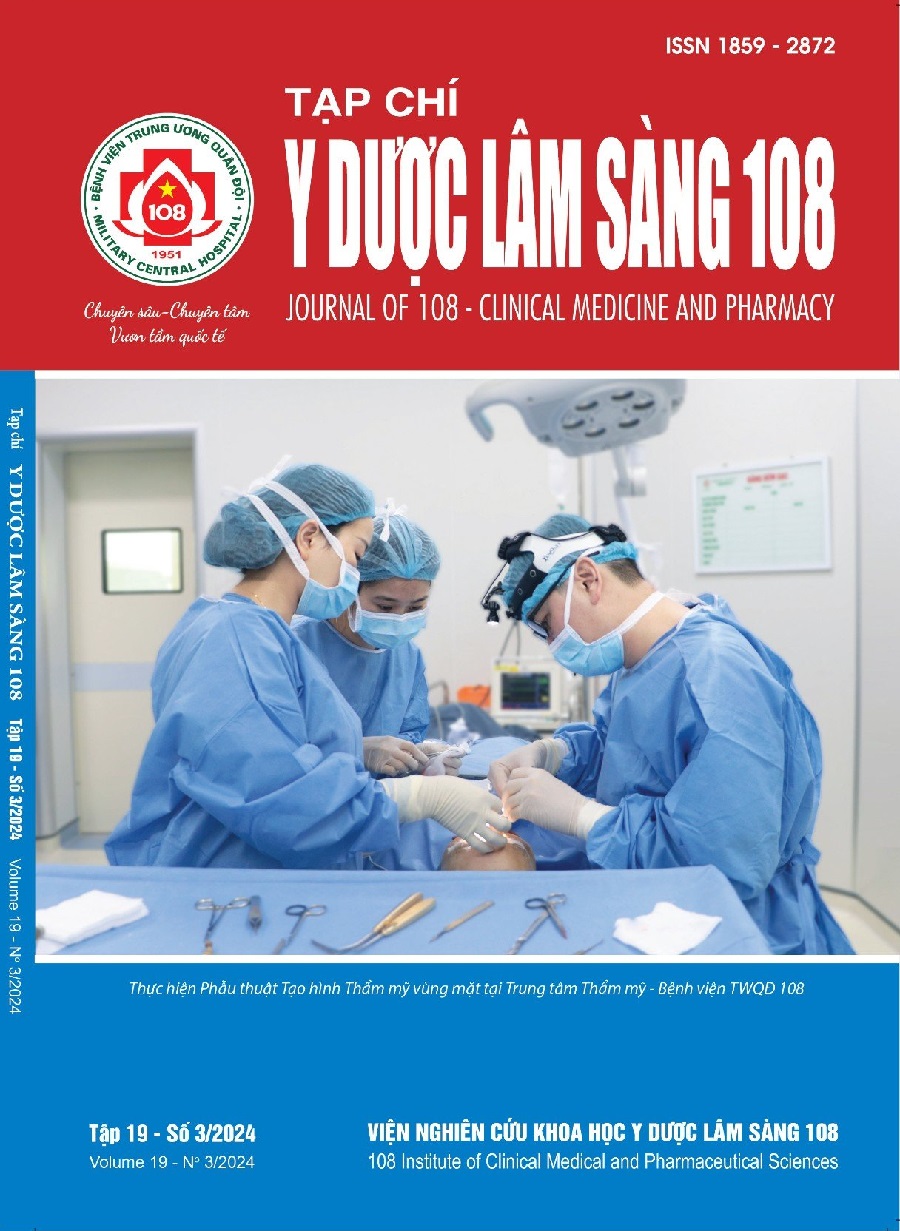Immunogenicity of the nanocovax vaccine against COVID-19 in Vietnamese volunteers
Main Article Content
Keywords
Abstract
Objective: To evaluate the Immunogenicity of the Nanocovax vaccine with dose 25µg against COVID-19 produced by Nanogen in Vietnamese volunteers aged 18 years and older. Subject and method: Randomized controlled (placebo) blinded phase 2 and 3a vaccine clinical trials studies were conducted on healthy volunteers, aged 18 years and older according to a 2-dose regimen, 28 days apart. Immunogenicity was assessed based on the quantitative results of IgG antibody concentration against protein S (AntiS-IgG); Test results assessing SARS-CoV-2 virus neutralization activity (Surrogate Virus Neutrolization Test: sVNT) and test results quantifying of live SARS-CoV-2 neutralizing antibody titers with 50% plaque reduction neutralization test (PRNT50) based on cell culture. Result: At day 42 after the first injection, the IgG concentration increased with the geometric mean content (GMCs) of AntiS-IgG being 57.90U/ml, equivalent to 1,262.22BAU/ml; and the geometric mean fold rise (GMFR) of AntiS-IgG reached 227.4 times compared to before injection. The seroconversion rate of the Nanocovax group reached 99.4%. The proportion of subjects vaccinated with nanocovax 25µg vaccine with virus neutralization activity by alternative neutralization test (sVNT) was high (99.03%). PRNT50 results in the vaccinated group: 91.9% of serum samples neutralized live virus on the Wuhan strain, the Delta strain (India) was 62.2%, and the Alpha strain (UK) was 80.0%. Conclusion: Nanocovax 25µg vaccine meets the requirements for immunogenicity in volunteers.
Article Details
References
2. WHO (2023) COVID-19 Epidemiological Update - 24 November 2023.
3. Yadav T, Kumar S, Mishra G et al (2023) Tracking the COVID-19 vaccines: The global landscape. Hum Vaccines Immunother 19(1): 2191577.
4. Tran TNM, May BP, Ung TT et al (2021) Preclinical immune response and safety evaluation of the protein subunit vaccine nanocovax for COVID-19. Front Immunol 12: 766112.
5. Bộ Y tế (2020) Quyết định 3659/QĐ-BYT Về việc ban hành “Hướng dẫn về nghiên cứu, thử nghiệm lâm sàng, đăng ký lưu hành, sử dụng vắc xin phòng COVID-19”.
6. Bộ Y tế (2020) Thông tư 10/2020/TT-BYT ngày 11 tháng 6 năm 2020 “quy định về thử tương đương sinh học của thuốc”.
7. Heath PT, Galiza EP, Baxter DN et al (2022) Safety and Efficacy of the NVX-CoV2373 Coronavirus disease 2019 vaccine at completion of the giả dược-controlled phase of a randomized controlled trial. Clin Infect Dis Off Publ Infect Dis Soc Am 76(3): 398–407.
8. Keech C, Albert G, Cho I et al (2020) Phase 1–2 Trial of a SARS-CoV-2 recombinant spike protein nanoparticle vaccine. N Engl J Med 383(24):2320-2332.
9. Folegatti PM, Ewer KJ, Aley PK et al (2020) Safety and immunogenicity of the ChAdOx1 nCoV-19 vaccine against SARS-CoV-2: a preliminary report of a phase 1/2, single-blind, randomised controlled trial. Lancet Lond Engl 396(10249): 467-478.
 ISSN: 1859 - 2872
ISSN: 1859 - 2872
